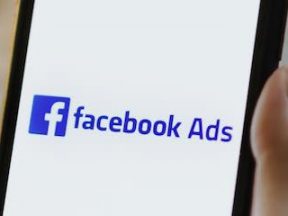Search engine optimization, content marketing, and the whole of inbound marketing are important for promoting a business. But let’s not forget about advertising.
I recently attended a marketing event where an inbound marketer responsible for search engine optimization and content for a multi-million dollar company complained that her site traffic had dropped because of poor advertising performance.
It was odd to hear her complain about advertising results and yet admit a dependency on them.
Aren’t inbound tactics supposed to replace ads?
Inbound vs. Outbound
For years, some marketers have argued that outbound (traditional) marketing was dead, dying, or less important.
As HubSpot puts it, “Inbound marketing is a business methodology that attracts customers by creating valuable content and experiences tailored to them. While outbound marketing interrupts your audience with content they don’t always want, inbound marketing forms connections they are looking for and solves problems they already have.”

HubSpot pits inbound marketing against outbound.
Take a marketing course from the Digital Marketing Institute, and you’ll hear an instructor, Philippe Polman, say, “In today’s business world, inbound marketing is the most important aspect of digital marketing.”
But is that always true? What if outbound marketing is essential? And why can’t inbound and outbound coexist?
A few facts demonstrate that advertising (outbound marketing) is growing, and the growth is likely an indication of value.
Amazon Ads
Amazon’s advertising services generated $31.6 billion in 2021, according to the company’s 10-K filing (PDF) with the U.S. Securities and Exchange Commission. Some $9.7 billion of that revenue came in just the last three months of the year. Year-over-year, Amazon’s ad revenue was up 32%.
This result puts Amazon well behind Google Ads ($205.9 billion in 2021) and Facebook ($115 billion in 2021), but ahead of YouTube ($28.8 billion in 2021) and TikTok ($4 billion in 2021).
Amazon is a major player in digital advertising. And it continues to rapidly grow despite being restrictive. The company controls most of the content, keeps a close watch on the audience, and has even been accused of stealing product ideas from its advertisers (marketplace sellers).
The growth implies advertising on Amazon — perhaps due to its rich first-party targeting data and purchase environment — is valuable to advertisers and thus effective.
Google Ads
Amazon is not the only ad platform growing.
Google’s advertising revenue rose 42.6% from $146.9 billion in 2020 to the aforementioned $205.9 billion in 2021.
Google acknowledges that its success is contingent on happy advertisers. “We generated more than 80% of total revenues from the display of ads online in 2021. Many of our advertisers…can terminate their contracts with us at any time,” the company reported in its 10-K.
“Failing to provide superior value or deliver advertisements effectively and competitively could harm our reputation, financial condition, and operating results.”
Google almost certainly understands that the quality of its search engine results is a key factor in advertising success. But it would not be surprising if the company found ways to optimize both: the search experience and ad value.
Consider position zero. Google often tries to answer the user’s query on the search results page.
Searching “inbound marketing definition” on Google can return a snippet that includes an answer to the query, leaving no need to click elsewhere.

Searching on Google for “inbound marketing definition” produces a position-zero snippet from a Salesforce article.
A search engine optimizer might argue that position one is a big win for the company. But gaining and holding it is an SEO challenge.
Google presumably wants to answer queries quickly and keep users on its properties. As this trend continues, competition for organic keywords could become fierce. At the same time, an ad could trump even position zero.
Facebook Grew, Too
Not too long along Facebook took out full-page newspaper ads claiming that Apple iOS 14’s opt-in requirement would significantly harm small businesses (and Facebook’s ad revenue).
“We’re standing up to Apple for small businesses everywhere,” the ad’s headline read. “Without personalized ads, Facebook data shows that the average small business advertiser stands to see a cut of over 60% of their sales for every dollar they spend….these changes will be devastating to small businesses.”
Let’s put aside the irony of making a case for personalized digital ads in a newspaper and recognize that Apple’s policy changes certainly impacted ad targeting. However, small businesses, in general, have not been devastated.
What’s more, predictions that iOS 14 could send advertisers to inbound marketing have not yet come to fruition.
Apple’s iOS 14 update was a meaningful, significant change to advertising, but still something of a nonevent for the industry.
This is especially true when you consider that Facebook’s advertising revenue rose 36% in 2021, up from $84.8 billion in 2020. Facebook saw average revenue per ad and total overall ad revenue increase.
Even in the face of adverse effects, outbound marketing on Facebook is still booming.
Balanced Approach
None of this implies that advertising is somehow superior to other marketing forms. I’ve cited Amazon, Google, and Facebook to point out that outbound marketing remains valid and should be part of a balanced approach that includes SEO and content.





